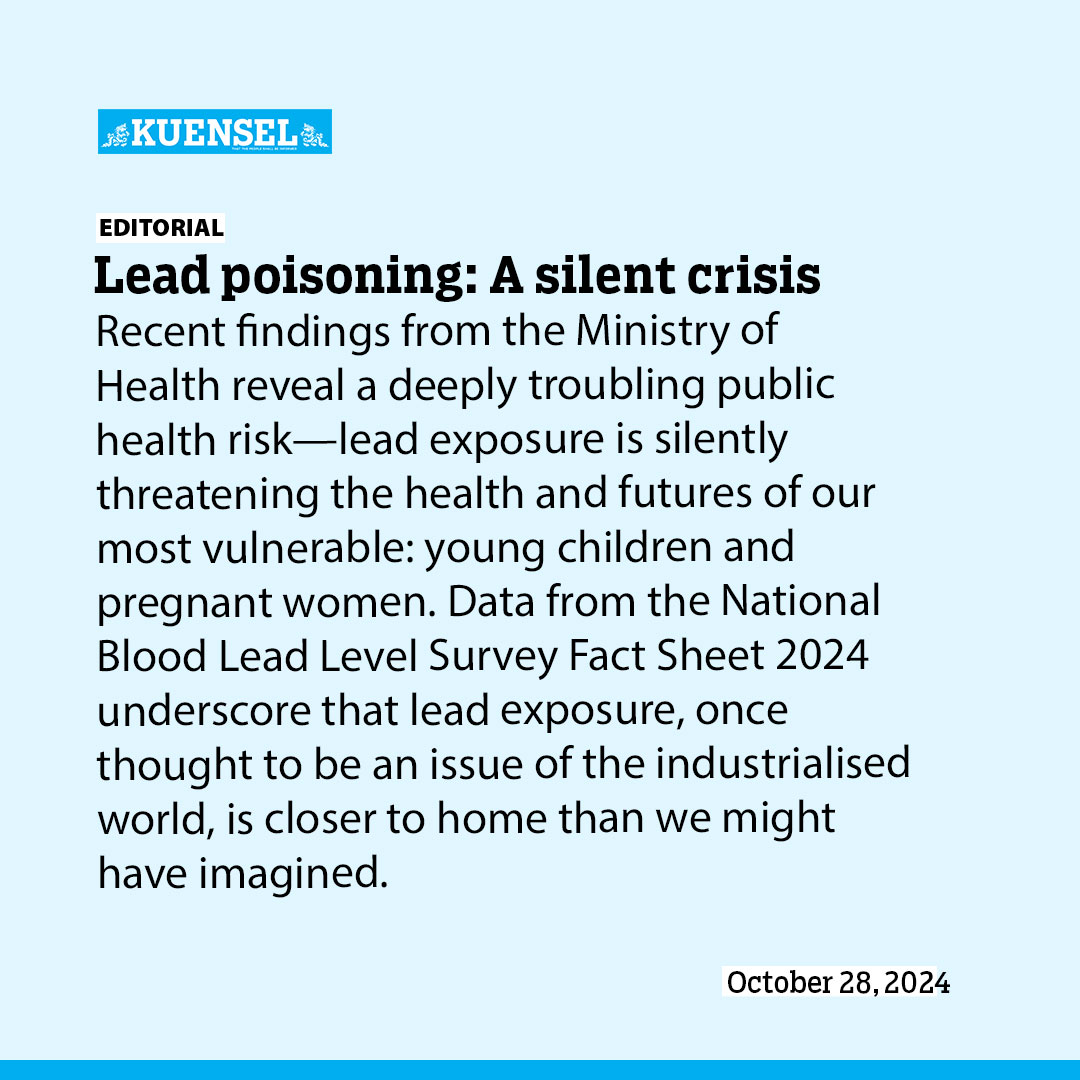Recent findings from the Ministry of Health reveal a deeply troubling public health risk—lead exposure is silently threatening the health and futures of our most vulnerable: young children and pregnant women. Data from the National Blood Lead Level Survey Fact Sheet 2024 underscore that lead exposure, once thought to be an issue of the industrialised world, is closer to home than we might have imagined. The average blood lead level in monastic children is recorded at 5.9 micrograms per decilitre (µg/dL), far exceeding the safe threshold of 3.5 µg/dL set by the Centres for Disease Control and Prevention. Alarmingly, 86 percent of monks under 13 years have elevated lead levels, while nearly 60 percent of pregnant mothers also surpass this critical limit. These figures should prompt immediate, co-ordinated action.
Lead poisoning is insidious. It accumulates in the body over time, quietly disrupting vital bodily functions and development. For children, even minimal exposure can lead to irreversible consequences. Lead affects brain development, diminishes IQ, and leads to learning difficulties and behavioural issues that could impact a child’s entire life. In adults, especially pregnant women, lead exposure increases the risks of high blood pressure, kidney disease, and can have severe consequences for the developing fetus, potentially leading to premature births and developmental delays. In short, lead does not merely poison individuals—it cripples potential, undermines families, and imposes a hidden cost on society.
In Bhutan, where family and community structures are at the heart of our cultural identity, we cannot afford to ignore this silent risk. The ubiquity of lead exposure sources—old paint, contaminated soil, dust from vehicle repairs and metal workshops—demands that we adopt a multifaceted approach to protect our future generations. Awareness alone is not enough. We must turn awareness into action, and action into accountability.
To address this, a few key strategies should be implemented immediately. Rigorous regulation of lead levels in commonly used materials is crucial. While Bhutan’s industries are relatively small, many consumer products are imported, often without stringent oversight on toxic substances. Authorities should impose and enforce strict import standards to curb the entry of lead-containing products into our markets.
Targeted health screenings must be made accessible, especially for vulnerable groups in high-risk areas. Mobile health units could bring testing directly to monastic schools and communities with suspected lead exposure. Early detection can prevent the worst impacts and offer families the knowledge they need to limit further exposure.
Public health education campaigns should reach every corner of the country. Parents and caregivers need practical information on reducing exposure risks at home. Simple practices—like regular handwashing with soap, keeping children away from hazardous environments, and following a diet rich in iron, calcium, and vitamin C—can block lead absorption. Public service announcements on these preventive measures could save lives.
There is a need to foster a sense of national responsibility for this issue. Lead exposure is not just a health concern; it is a societal one.
This problem demands a loud response. By taking decisive steps to regulate, educate, and prevent, we can shield our future generations from the devastating impact of lead exposure.


